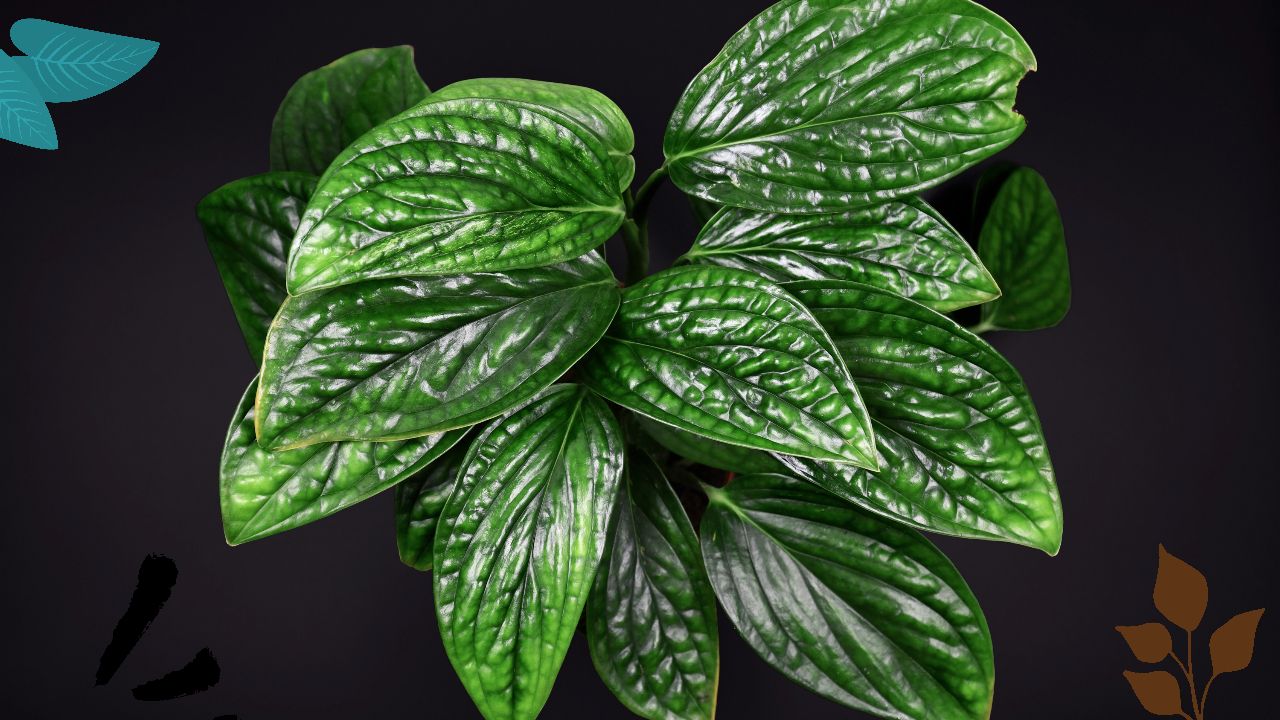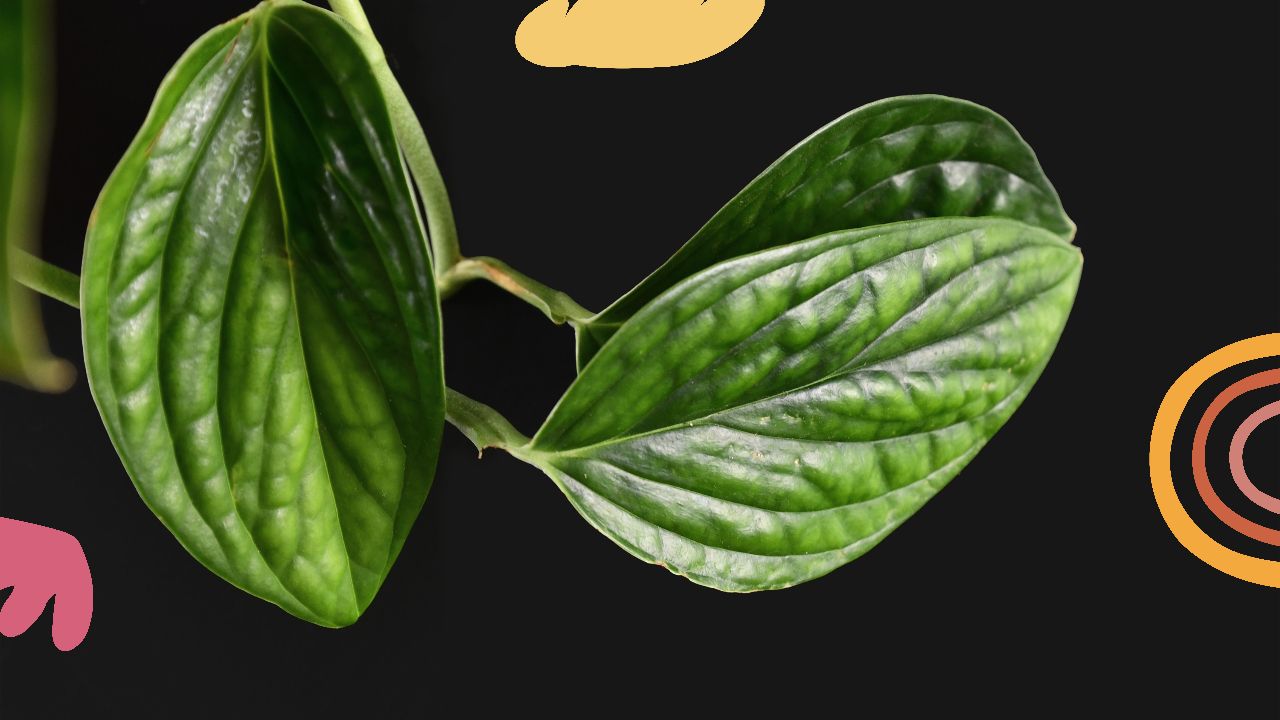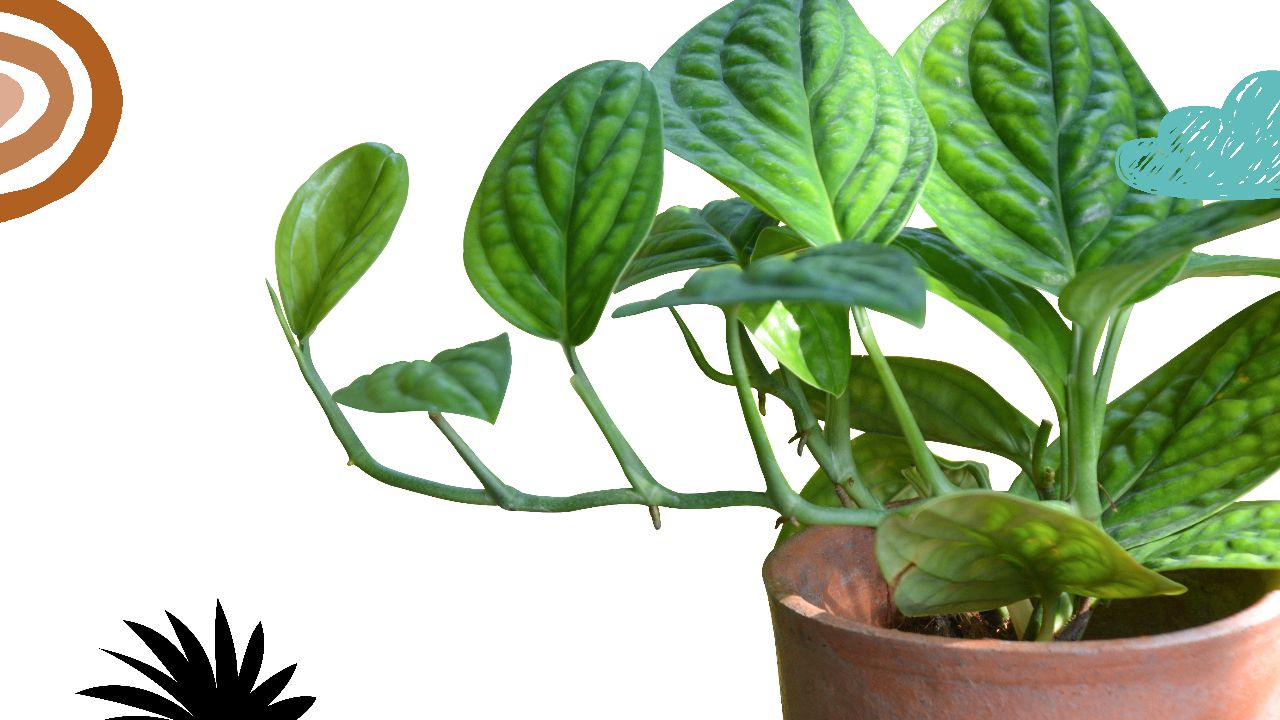
At a Glance: Monstera Peru Essentials
- Commonly Known As: Monstera Peru
- Botanical Designation: Identified as Monstera karstenianum
- Family Membership: Part of the Araceae family
- Plant Characteristics: A perennial vine by nature
- Adult Dimensions: Grows to a height of 6-8 feet and a width of 12-14 inches
- Preferred Sunlight: Best suited for partial sun exposure
- Ideal Soil: Loves well-draining, loamy soil
- Soil pH Level: Prefers acidic to neutral soil
- Climate Range: Thrives in USDA zones 10-12
- Geographic Origins: Indigenous to South America
- Safety Alert: Harmful if ingested by pets or humans
Join our newsletter
Stay on top of the latest in landscaping and lawn care with one valuable tip right in your inbox every Saturday morning.
Introduction: Unveiling the Mysteries of Monstera Peru
Imagine stepping into a tropical rainforest where vining plants weave through the canopy and dappled light filters through the leaves. Among these enchanting green wonders, one plant stands out for its unique allure: the Monstera Peru, scientifically known as Monstera karstenianum. This tropical plant hails from tropical regions where it thrives in the complex, humid ecosystems of the forest floor and lower canopy. Its distinct, deeply-ridged leaves and silvery sheen capture the eye and imagination of plant enthusiasts around the globe.
What sets Monstera Peru apart from other Monstera varieties, and indeed, most monstera plants? To begin with, its striking appearance—characterized by leather-like, dark green leaves that almost appear sculpted—immediately sets it apart. While many plants in the monstera family are beloved for their unique foliage, Monstera Peru takes it a step further with its intriguing patterns and textures. Moreover, this fascinating species is also noted as a Monstera Peru rare variant among the more commonly found Monstera Deliciosa and Monstera Siltepecana.
In the coming sections, we'll delve deeper into the mysteries surrounding Monstera Peru. From Monstera Peru care tips to understanding if Monstera Peru is toxic to your pets, you'll find comprehensive guidance on how to make this tropical beauty thrive in your living space.
Stay with us as we unveil the secrets of this captivating plant, and help you uncover the ideal Monstera Peru plant care practices to make it a shining star in your collection of tropical plants.

The Epiphytic World of Monstera Peru
Picture this: high above the forest floor, a community of plants lives in harmony with the towering trees, drawing nutrients and water from the air rather than the soil. These are epiphytes, remarkable plants that have adapted to live on other plants, often in tropical environments. Yet among this intriguing botanical society, one plant particularly stands out—the Monstera Peru, or scientifically termed, Monstera karstenianum.
So, what exactly is an epiphyte? Unlike parasites, which harm their host plants, epiphytes peacefully co-exist with them. They typically feature shallow roots that cling onto tree trunks, branches, or other supports, absorbing moisture and nutrients from the air and rain. They're common residents of tropical rainforests where they bask in dappled light, shielded from direct sunlight.
Monstera Peru fits perfectly into this epiphytic category. Its fascinating life begins often as a trailing plant, meandering its way upward onto a moss pole or even a host tree in its natural habitat. With shallow roots adept for clinging and nutrient absorption, the Monstera Peru epitomizes the adaptive characteristics that make epiphytes such unique players in the world of tropical plants. If you're enticed by the idea of nurturing an epiphyte, then learning the ropes of Monstera Peru care is a journey worth embarking on.
This fascinating corner of the plant kingdom is rich in diversity and adaptation, and Monstera Peru serves as an exemplary specimen in unveiling the wonders of epiphytic existence.
Light Requirements: The Do's and Don'ts for Monstera Peru
You've secured your Monstera Peru, an exemplar of tropical plants that liven up any space with its lush greenery and unique leaf patterns. Now comes the paramount question: How much light does it need? Understanding the light requirements of your Monstera Peru is akin to decoding a critical part of its happiness equation. It can be the difference between a plant that thrives and one that merely survives.
The Importance of Indirect Sunlight
Monstera Peru is no fan of direct sunlight; instead, it thrives in bright but indirect light. In its natural habitat of tropical rainforests, the plant receives dappled sunlight filtered through the leafy canopy above. Such conditions should be replicated in your home for optimal Monstera Peru plant care. Direct sunlight can cause its gorgeous leaves to turn yellow or even burn, depriving you of its aesthetic splendor. Therefore, positions near east or west-facing windows, where the plant can get plenty of indirect light, are ideal.

Common Mistakes to Avoid
- Overexposure to Direct Sun: As mentioned, direct sun can be detrimental. Even if your Monstera Peru plant appears to be basking happily in direct sunlight, it may be incurring 'silent' damage.
- Too Little Light: While it's essential to protect your Monstera from direct sunlight, an inadequately lit room can lead to leggy vines and fewer leaves. A dim environment is particularly harmful during its growing season.
- Not Rotating the Plant: Monstera Peru typically grows toward the light. If you don't rotate it regularly, you'll end up with a lopsided plant. A simple 90-degree turn every couple of weeks should suffice.
- Ignoring Yellowing Leaves: If you start to see yellow leaves, that's your plant signaling distress, possibly due to incorrect lighting conditions. This symptom should prompt an immediate review of your light setup.
Soil 101: The Best Mix for Your Tropical Plant
Soil—it's the unsung hero in the care of your Monstera Peru. You might be acing the lighting game, but if the soil mix is off, you're setting yourself up for a plethora of problems, from root rot to unhappy, drooping leaves. In the plant world, soil is not a one-size-fits-all affair. Especially for tropical plants like Monstera Peru, soil can be the difference between a thriving plant and a languishing one.
The Importance of Well-Draining Soil
When it comes to Monstera Peru care, well-draining soil is non-negotiable. In its natural habitat—tropical rainforests—Monstera Peru typically enjoys quick drainage. Sitting in wet soil can spell doom for this plant, leading to root rot and unhealthy leaves. Ensure your pot has drainage holes and use a well-draining soil mix to keep your Monstera Peru plant happy.
The Role of Orchid Bark in the Soil Mix
Orchid bark isn't just for orchids. Adding a few handfuls of orchid bark to your Monstera Peru's potting mix can improve drainage and add aeration, mimicking the plant's natural habitat. It's an excellent way to introduce some tropical vibes into your indoor garden setup.
Watering Routine: Balance is Key
Water—a simple molecule, yet an essential element that can make or break your Monstera Peru's growth and overall health. Just like a balanced diet is crucial for humans, a balanced watering routine is vital for Monstera Peru care. So, how do you strike that elusive balance between too little and too much? Let's dive in.
How and When to Water Your Monstera Peru
For thriving Monstera Peru plants, timing is everything. Aim to water your plant when the top inch of the soil feels dry to the touch. Unlike other plants that prefer a more rigid schedule, Monstera Peru typically thrives when it's watered on an as-needed basis. A watering can with a long spout works wonders for reaching those hard-to-access soil areas. During the growing season, you may find your Monstera Peru needs water more frequently, while in winter, you can pull back a bit to avoid wet soil.

Common Signs of Overwatering and Underwatering
Overwatering:
- Yellow leaves
- Root rot
- Dropping leaves
Underwatering:
- Dry, brown leaf tips
- Leggy vines
- Fewer leaves
If you notice any of these symptoms, consider them red flags in your Monstera Peru care regimen. Overwatering often leads to root rot, a common killer among Monstera plants. On the flip side, underwatering can result in leggy vines and a sad-looking plant.
In a nutshell, the art of watering Monstera Peru is all about observation and adjustment. Pay close attention to soil moisture and the plant's appearance to cultivate a healthy Monstera Peru that will be the envy of every plant enthusiast.
Join our newsletter
Stay ahead of the curve in all things outdoor.
Get the inside scoop on the latest landscaping, lawn care, and fencing trends with 1 actionable tip every Saturday morning.
Temperature and Humidity: Creating a Mini-Tropical Environment
You've brought a slice of the tropics into your home with your luscious Monstera Peru, but replicating its natural habitat can be quite the balancing act. Not just any environment will do for these finicky tropical plants. Like a gourmet chef perfects a recipe, you'll need to dial in the ideal temperature and humidity to keep your Monstera Peru not just surviving, but thriving. So, how do you create this mini-tropical paradise? Let's find out.
Ideal Temperature and Humidity Ranges
For Monstera Peru, think warm and humid—conditions that mimic its native tropical regions. Keep your thermostat set between 65–80°F (18–27°C) for optimal growth. As for humidity, Monstera Peru revels in levels ranging from 60–80%. Anything lower, and you may notice yellowing leaves and lackluster growth.
Tips for Maintaining a Tropical Climate for Your Tropical Plants
- Humidifier: Consider investing in a humidifier to maintain that high humidity Monstera Peru craves.
- Misting: A light spray of water with a misting bottle can mimic tropical rainforests' natural moisture.
- Tray of Water: Placing a tray of water near the plant can also add extra humidity to the surrounding air.
- Avoid Direct Sun: Direct sun can not only scorch the leaves but also lower the humidity level by rapidly evaporating moisture.
Remember, your Monstera Peru is more than just a plant; it's a living barometer that reacts visibly to its environment. By paying attention to temperature and humidity, you'll become fluent in the silent language of your tropical plant, enabling you to provide a near-natural habitat that will result in lush, vibrant growth.
Feeding Your Monstera: Fertilizer Essentials
Think of fertilizing your Monstera Peru as giving it a multi-vitamin—providing it with the necessary nutrients to grow lush, vibrant leaves. Yet, just as you can't gulp down an entire bottle of vitamins and expect good health, over-fertilizing can lead to problems like root rot. So, when it comes to Monstera Peru care, how do you strike the right balance between feast and famine? Let's dive in.
Recommended Types and Frequencies of Fertilization
- Balanced Fertilizer: A balanced fertilizer, often labeled 20-20-20, is usually a good choice for most Monstera plants, including Monstera Peru. This will provide the plant with essential nutrients without leaning too much on any single one.
- Frequency: During the growing season, you'll want to fertilize your Monstera Peru typically every 4–6 weeks. However, you can cut back during the winter months, when the plant is not actively growing.
- Alternative Additives: While fresh potting soil with well-draining properties is essential, you can also mix in other elements like orchid bark or coco coir to improve drainage and nutrient retention.
- Signs of Over or Under-Fertilizing: Yellow leaves or dropping leaves can be a sign of over-fertilizing, while leggy vines and fewer leaves usually signal under-fertilization.
Feeding your Monstera Peru is not just a routine task but an integral part of Monstera Peru plant care. Done correctly, you'll not only prevent root rot but also encourage healthy leaves and robust growth.

Pruning and Training: Shaping Your Monstera Karstenianum
Have you ever looked at your Monstera Karstenianum and thought, "If only you could be as well-groomed as a topiary in a royal garden?" With the right pruning and training techniques, your vining plant can be more than just a wild child of the tropics; it can be a sculpted masterpiece.
When and How to Prune for Optimal Growth
- Timing is Everything: The best time to prune your Monstera Karstenianum is during its growing season. Cutting back leggy vines and removing yellowing leaves allow the plant to redirect energy to new growth.
- Methodology: Use clean, sharp scissors or pruning shears to make precise cuts. This reduces stress on the plant and minimizes the risk of disease.
Using Supports like Moss Poles and Trellises
- Moss Poles: These are excellent for providing vertical support, encouraging your Monstera to grow tall rather than sprawl. Moss poles also retain moisture, which can be beneficial in drier environments.
- Trellises: Another sturdy option that allows the vining plant more room to spread its leaves. Unlike moss poles, trellises are generally not moisture-retentive but offer more design flexibility.
Pruning and training your Monstera Karstenianum are essential aspects of plant care that can dramatically impact its appearance and health. The goal is to mimic the plant's natural habitat while also making it a decorative asset to your space. So grab those shears, choose your support, and let's get shaping!
Propagation: Multiplying the Beauty
Imagine having not just one but multiple Monstera Peru plants beautifying your space! Sounds like a dream, right? But what if we told you that this dream could be your reality, with just a little knowledge on the art of plant propagation? Whether you're an experienced gardener or someone just beginning their journey into the world of tropical plants, we've got you covered.
Step-by-Step Guide on Propagating Monstera Peru
- Preparation: Choose a healthy Monstera Peru plant with robust stem cuttings, free from any signs of disease or yellowing leaves.
- Cut and Root: Take a cutting that includes several leaf nodes. Place the cutting in water or sphagnum moss to encourage root growth.
- Potting: Once roots have formed, prepare a fresh potting mix that includes well-draining soil and perhaps a hint of orchid bark for texture and drainage.
- Placement: Position your newly potted Monstera Peru in bright but indirect light, avoiding direct sunlight to prevent leaf burn.
- Post-Propagation Care: Keep an eye out for any signs of root rot, adjusting watering levels as needed.
Get ready to multiply the beauty of your Monstera Peru and perhaps even share it with friends and family. After all, why keep all that lush, tropical charm to yourself? Stay tuned for our detailed guide, and soon you'll be a propagation pro!
Common Problems and Solutions
You've invested time, love, and maybe even a little bit of obsession into your Monstera Peru. So, when you see yellow leaves or leggy vines, it can feel like a small tragedy. But don't despair! Many common problems with Monstera Peru plants are easily fixable, even if you're not a seasoned horticulturist. In this section, we'll dig into dealing with pests and diseases, decipher the mystery of yellowing leaves, and tackle the challenge of leggy vines.
Dealing with Pests and Diseases
- Spider Mites: Use a damp cloth to wipe down the leaves and consider introducing natural predators.
- Root Rot: Well-draining soil and a pot with drainage holes can prevent this common issue.
Addressing Common Issues
- Yellow Leaves: Usually a sign of overwatering. Ensure your potting mix includes orchid bark for better drainage.
- Leggy Vines: Often an indicator of insufficient light. Monstera Peru plants thrive in bright but indirect light.
A Few Key Tips:
- Drainage Hole: Never underestimate the power of a drainage hole in preventing root rot and wet soil conditions.
- Soil Moisture: Keep the soil moist but not wet. The balance is crucial for the health of most Monstera plants.
- Seasonal Care: During the growing season, Monstera Peru typically requires more frequent watering and possibly repotting.
Now, armed with this treasure trove of Monstera Peru care tips, you can transform your indoor jungle from a survival show to a tropical paradise. Yes, even your Monstera Peru, as rare and exotic as it is, can flourish in your care.
Conclusion: Your Journey to Monstera Peru Mastery
Congratulations, you've made it through the labyrinth of Monstera Peru care! You're now well-equipped to nurture this stunning tropical plant from its early days as a stem cutting to a full-fledged Monstera marvel. Let's recap some key points for your Monstera Peru journey:
- Light is Life: Indirect light is crucial. Avoid direct sunlight to prevent leaf burn.
- Soil Matters: A well-draining mix featuring orchid bark will keep your Monstera Peru happy.
- Water Wisely: Pay close attention to your watering routine. Overwatering and underwatering can lead to root rot and yellow leaves.
- Climate Control: Strive to mimic a mini-tropical environment with ideal temperature and humidity ranges.
- Troubleshoot like a Pro: From pests to leggy vines, know how to diagnose and solve common problems.
Monstera Peru is more than just another houseplant; it's a rewarding journey into the world of tropical plants. It's about balancing light, soil, water, and love—ingredients that make any Monstera thrive. So, whether you're a seasoned plant parent or a total newbie, there's always something new to learn and explore in Monstera Peru care.
Go ahead, roll up those sleeves and dive into the leafy, viney wonders of your very own Monstera Peru. The road to mastery awaits!
If you're looking for more information on indoor plant light requirements, check out this informative article.
Join our newsletter
Stay ahead of the curve in all things outdoor.
Get the inside scoop on the latest landscaping, lawn care, and fencing trends with 1 actionable tip every Saturday morning.